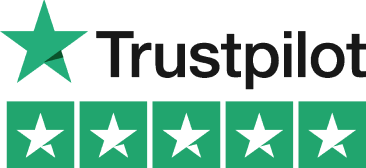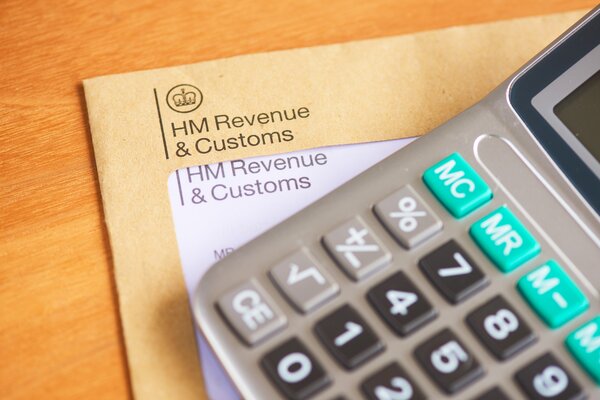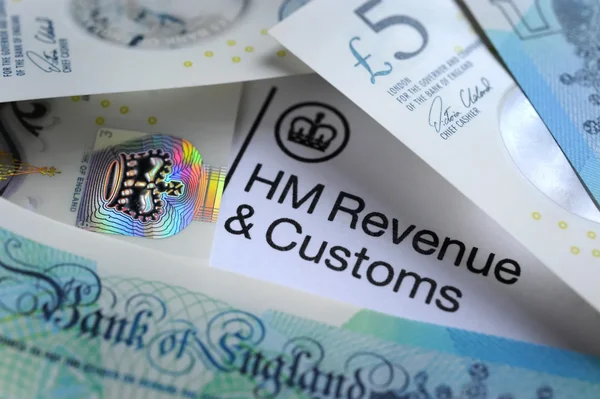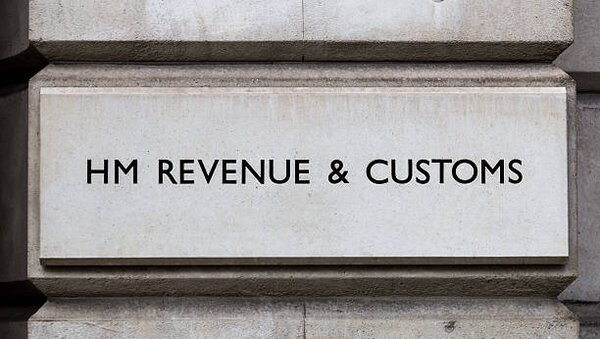Let’s Break This Down Together...
Choosing the right VAT software can feel overwhelming. There are so many options, and getting it wrong could cost you time and money.
This guide covers what makes great MTD-compliant software, key features to look out for, and how to switch smoothly. We also break down costs, industry-specific tools, and common mistakes to avoid.
By the end, you’ll know exactly what to look for and how to stay compliant without the stress. Let’s dive in.
What Makes Great VAT Software for Making Tax Digital Worth Having?
Great VAT software does more than just calculate numbers. It gives you peace of mind that your business is compliant. It frees up your time to focus on what matters, running your business.
The best solutions offer direct HMRC integration, making quarterly submissions virtually automatic. Key features to look for include VAT-specific features such as automated VAT calculations, digital VAT return submissions, and tools designed to streamline VAT reporting and compliance.
They’ll flag potential errors before you submit. They also keep digital records as required by MTD regulations. Compliance verification is built in, helping ensure your business meets all VAT obligations and reducing the risk of errors or penalties.
Look for software that grows with your business. What works for you as a sole trader might not be suitable when you hire employees. User-friendly interfaces matter too. You shouldn’t need an accounting degree to navigate your VAT software.
Choosing the Best Digital VAT Software for Small Business
When selecting VAT software, compatibility with existing systems should be top priority. Selecting compatible mtd software and compatible software is essential for seamless integration with HMRC, ensuring accurate digital record keeping and submission of tax information. Check if your accounting software has VAT capabilities or integrates with dedicated VAT tools.
Budget matters for small businesses. Many providers offer tiered pricing based on features or business size. There is a wide variety of software packages, mtd software options, and accounting packages available, catering to different needs and budgets for small businesses.
Cloud-based solutions give you the flexibility to manage VAT from anywhere. Choosing an mtd compliant software or software package that supports remote access and compliance can further streamline your VAT management process. This proves particularly useful for business owners who work on the go.
Consider the level of support offered. When something goes wrong at filing time, having access to knowledgeable support staff is invaluable. I once spent three hours on hold with a budget software provider during tax season. That experience taught me that good customer support is worth paying extra for.
The software should handle your specific VAT scheme correctly. This applies whether you’re on standard VAT accounting, the flat rate scheme, or cash accounting.
Top Features That Make VAT Software Essential for VAT Returns
Automatic tax calculation is the standout feature of quality VAT software. It applies the correct VAT rates to your transactions without manual intervention.
Digital receipt capture allows you to snap photos of receipts and store them electronically. These digital records are securely stored using cloud storage, ensuring you have remote access and backup. Secure data management practices, such as encryption and protected data centers, safeguard your financial information and help you stay compliant with record-keeping requirements.
Dashboard views give you at-a-glance information about your VAT position. The best software shows upcoming deadlines, submission history, and potential issues. Essential features include VAT reporting tools, access to VAT records, and the ability to file VAT returns directly from the dashboard to ensure compliance.
Report generation helps with business planning. Understanding your VAT patterns can help with cash flow forecasting and identifying potential savings.
Bank feed integration reduces manual data entry by pulling transaction information directly from your business accounts. Integration with bank accounts and automatic import of sales data support accurate VAT calculations, saving time and reducing errors.
As a comprehensive tax application, the software streamlines communication with tax authorities, ensuring your business remains compliant and efficient.

Security and Data Protection in VAT Software
When it comes to managing your business’s financial data, security and data protection should be at the top of your checklist. The best VAT software solutions are designed with robust security features to keep your sensitive information safe from prying eyes.
Look for software that uses advanced encryption methods to protect your data both in transit and at rest, ensuring that only authorised users can access your financial records.
A reliable VAT software solution will also offer secure data storage, often leveraging cloud technology to provide an extra layer of protection. Cloud-based VAT software not only safeguards your data from local hardware failures but also allows you to access your information securely from anywhere, at any time. This flexibility is especially valuable for small businesses that need to stay agile.
Compliance with data protection regulations, such as the General Data Protection Regulation (GDPR), is another critical factor. The right software solution will help you meet these legal requirements, giving you peace of mind that your business and customer data are handled responsibly.
By prioritising security and data protection in your choice of VAT software, you can minimize the risk of data breaches and maintain the trust of your clients and stakeholders.
Digital VAT Software for Different Industries
Every industry has its own unique tax challenges, and digital VAT software is increasingly tailored to meet these specific needs. Whether you’re in retail, construction, manufacturing, or professional services, there’s a VAT software solution designed to streamline your tax compliance and financial management.
For example, VAT software for retail businesses can automate VAT calculations on sales and purchases, making it easier to handle high transaction volumes and multiple VAT rates.
In the construction sector, specialized VAT software can track project costs, manage subcontractor payments, and ensure accurate VAT submissions for contractors and developers. Manufacturing businesses benefit from features that manage inventory, automate tax applications, and keep tabs on payment due dates, helping to avoid costly errors.
Industry-specific VAT software doesn’t just simplify compliance, it also provides real-time reporting and analytics. This empowers business owners to make informed decisions, optimize their tax strategies, and improve overall financial management. By choosing a VAT software solution that understands the nuances of your industry, you can reduce errors, save time, and focus on growing your business.
Pricing and Cost-Benefit Analysis
Investing in VAT software is a strategic decision, and understanding the pricing models available can help you find the best fit for your business. Many VAT software solutions offer flexible pricing plans, such as monthly or annual subscriptions, while others may provide a one-time purchase option. This flexibility allows small businesses to choose a plan that aligns with their budget and business needs.
When weighing the cost against the benefits, consider how much time and manual effort you’ll save by automating your tax digital processes. Reliable VAT software reduces the risk of errors, helps you stay compliant with tax laws, and can prevent costly penalties for late or incorrect filings. These savings often outweigh the upfront or ongoing costs of the software.
Additionally, a good VAT software solution can enhance your overall tax management, providing accurate financial data and insights that support better business decisions. By streamlining your tax filing process and improving compliance, you’re not just saving money, you’re also setting your business up for long-term success.
Take the time to compare software solutions, assess their features, and ensure you’re getting the best value for your investment in your tax digital journey.

How to Switch to New VAT Software Painlessly
Timing matters when changing software. Plan your switch for a quieter business period or right after a VAT quarter has ended.
If your business currently uses spreadsheets or other non compatible software, you can use bridging software or MTD bridging software to transfer data and ensure compliance with HMRC's Making Tax Digital requirements during the transition.
Don’t rush the process. Allow time for proper setup, data migration, and getting comfortable with the new system. Take advantage of training resources. Most providers offer tutorials, webinars, or help guides to get you up to speed quickly.
Run your old and new systems in parallel for one VAT period if possible. This gives you confidence that the new software is calculating correctly. Get your team involved early if others will be using the software. Their buy-in will make the transition smoother and highlight potential issues.
Common VAT Software Mistakes to Avoid
Don’t choose software based solely on price. The cheapest option might cost you more in the long run if it lacks essential features. Avoid overlooking mobile capabilities. Being able to capture receipts on your phone can be a huge time-saver for busy business owners.
Don’t forget about scalability. Software that works perfectly now might become limiting as your business grows. Consider your expected transaction volume and how the software can support business growth over time.
Beware of over-complicated solutions. Some packages include features you’ll never use but still pay for. Smaller businesses and self employed businesses may benefit from simpler solutions that focus on everyday business needs, such as VAT submissions, expense claims, and easy bank integration.
Don’t neglect regular reconciliation. Even the best software needs human oversight to catch unusual transactions or coding errors.
Final Thoughts
Choosing the right digital VAT software isn’t just about ticking the MTD compliance box. It’s about making tax admin simpler and more accurate. When selecting a solution, consider the best MTD and best MTD software options, choosing a top-rated solution ensures robust features, HMRC integration, and suitability for your business needs.
The best solution balances functionality, ease of use, and cost. It should integrate seamlessly with your existing processes.
Take time to research options and try free trials. There are free software options available, and popular choices include Zoho software products and Sage Accounting, both known for their MTD compliance and comprehensive features. Speaking to other business owners about their experiences can provide valuable insights.
Remember that good VAT software should feel like it’s working for you, not creating extra work. The right platform will help you submit VAT returns digitally, manage your VAT return and VAT returns, and keep track of VAT bill deadlines efficiently. If it does, it might be time to look elsewhere.











